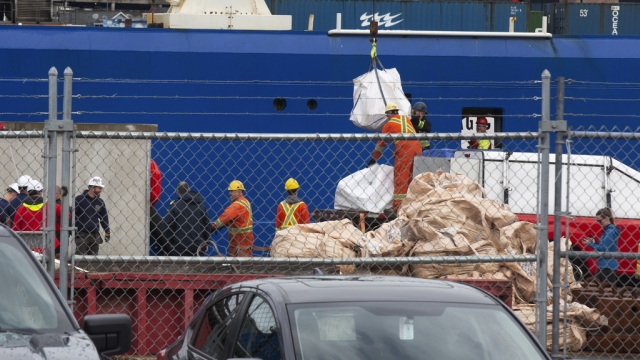Nearly a week after officials found the Titan submersible at the bottom of the Atlantic Ocean, the sub is now back on solid ground.
Pelagic Research Services confirmed its crews returned to port on Wednesday. The sub returned to port in multiple pieces, the photos revealed.
"They have been working around the clock now for ten days, through the physical and mental challenges of this operation, and are anxious to finish the mission and return to their loved ones," the company said in a statement.
Last week, Coast Guard officials said the submersible, which went missing June 18, was likely lost in a "catastrophic implosion."
In a statement on Wednesday, the Coast Guard said it had received debris and evidence from the wreck, including what may be human remains.
"United States medical professionals will conduct a formal analysis of presumed human remains that have been carefully recovered within the wreckage at the site of the incident," the statement read.
The Coast Guard said the Canadian vessel Horizon Arctic brought the debris to port in St. John’s Newfoundland. It will now transport the debris to the U.S. for further analysis and testing.

Officials said the debris was found about 1,600 feet from the Titanic in the Atlantic Ocean. They added the debris was located in an empty area of the ocean floor, and not immediately adjacent to the Titanic shipwreck.
"Essentially we found five different major pieces of debris that told us that it was the remains of the Titan," said Paul Hankins, director of salvage operations and ocean engineering with the U.S. Navy. "The initial thing we found was the nose cone, which was outside of the pressure hull. We then found a large debris field. Within that large debris field, we found the front end bell of the pressure hull. That was the first indication that there was a catastrophic event."

Pelagic Research Service deployed its Odysseus 6K to help bring Titan back to the surface.
"This recovery phase is a remarkably difficult and risky operation, especially at this depth," says Pelagic Research Services spokesperson Jeff Mahoney. "Given its continuous operation under the incredible atmospheric pressures, temperatures and environmental stresses, it's a testament to the skill of the team and the engineering of Odysseus."

Trending stories at Scrippsnews.com




